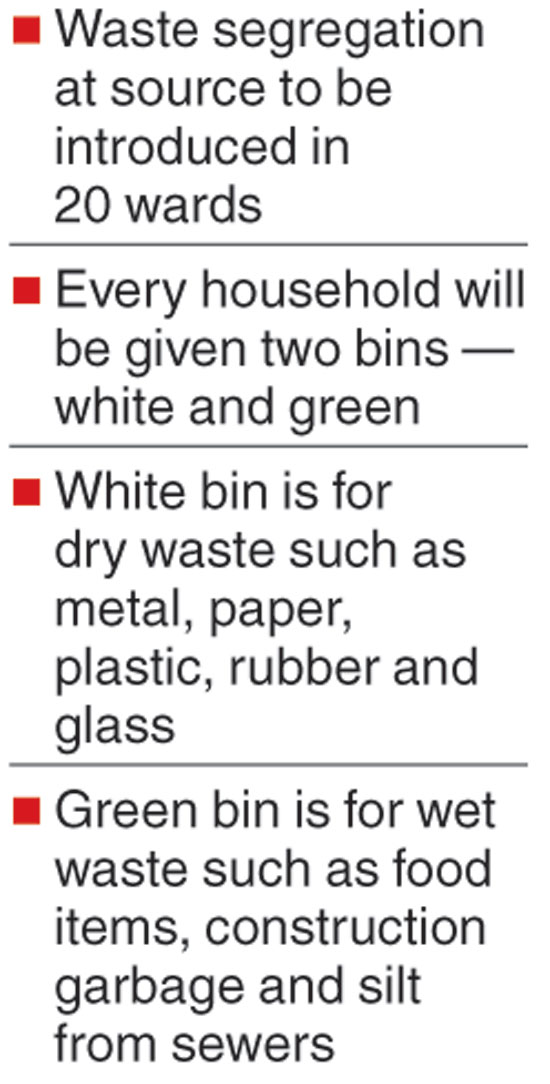The Calcutta Municipal Corporation will introduce segregation of waste at source in another 20 wards soon, mayor Firhad Hakim said while presenting the 2019-20 civic budget.
Each house in the 20 wards will be given two bins — a white bin for dry waste and a green one for wet waste.
Waste segregation at source, made mandatory by the solid waste management rules of the central government announced in 2016, is now practised in seven wards in Calcutta, as part of a pilot project that was started in 2010.
The response in the seven wards has been encouraging, officials said.
Segregation makes recycling of waste easier, thereby reducing the amount of garbage disposed of.
“We are going to start waste segregation at the household-level in 20 wards soon. We are doing it in seven wards now and will extend it to 20 more. With time, we will extend it to 40 wards, then 50 wards and finally, cover the entire city,” Hakim said while presenting the budget, which has sought to allot Rs 657.16 crore to the solid waste management department, the highest of all proposed allocations.
“Non-segregated waste gives rise to garbage mountains on dumping sites. We have to stop this. We have to modernise the solid waste management system. That is a challenge,” the mayor said.

Debabrata Majumdar, mayoral council member in charge of health, said all 20 wards where the segregation would be introduced had not yet been finalised.
Among the wards that have been selected are 82 (Chetla, represented by the mayor), 85 (Deshapriya Park), 70 (parts of Bhowanipore), 97 (parts of Kudghat and Tollygunge) and 11 (Hatibagan, represented by deputy mayor Atin Ghosh).
“The segregation will be introduced in phases in the 20 wards. The inauguration of the expansion is scheduled for February 20,” said Majumdar.
“Segregation will extend the life of a garbage dumping ground, such as Dhapa, by several years by reducing the volume of the waste reaching there,” an official said.
“Dry waste — such as paper, plastic, metal, glass, wood, tin and rubber — will be brought to a sorting centre, from where they will be sent to respective recycling units.”
A large volume of wet waste, mostly food items, will be taken to compost plants, where they will be treated and turned into fertiliser.
Only the “inert” wet garbage, such as construction waste and silt collected from sewers, will be sent to Dhapa.
“Dhapa is filled to the brim and the city needs another landfill site,” the official said. “If we keep dumping all our waste on the new site as we are doing now, it will reach its capacity in a few years. We have to then look for another plot but land is scarce within the city.”
Hakim said the CMC had made progress in its efforts to buy a plot in Rasapunja, near Baruipur, that would be turned into a garbage dumping ground. “We want to buy the land before the poll dates are announced,” Hakim said.

